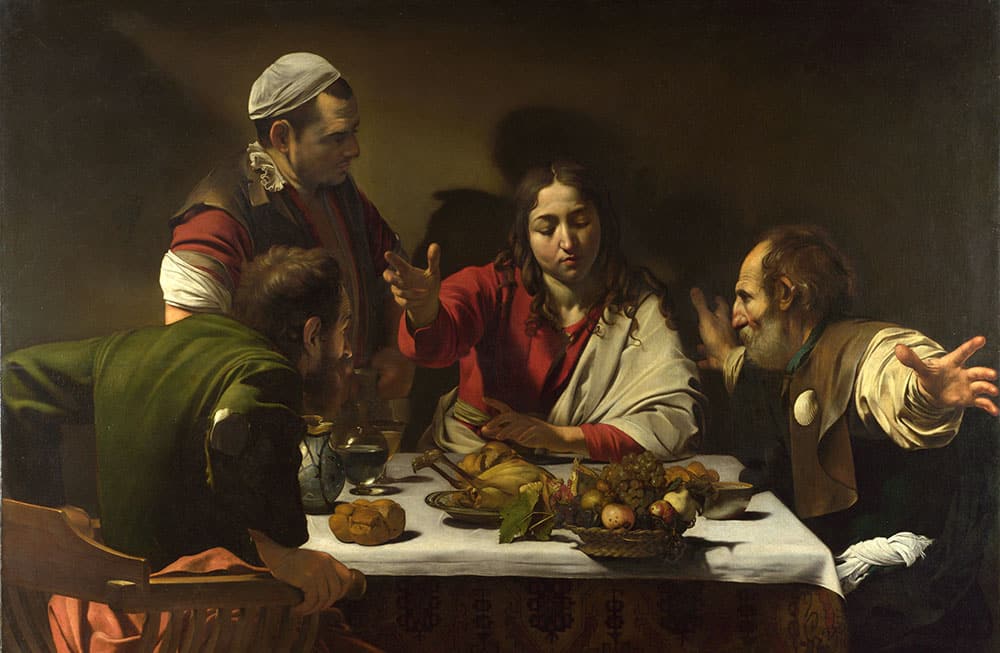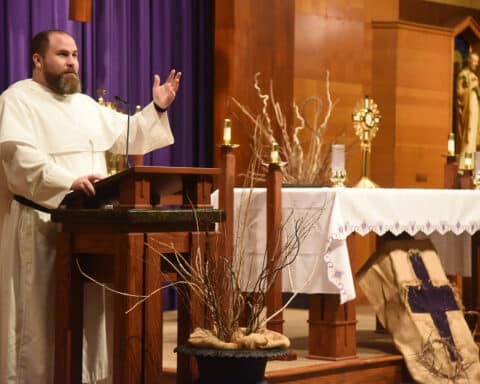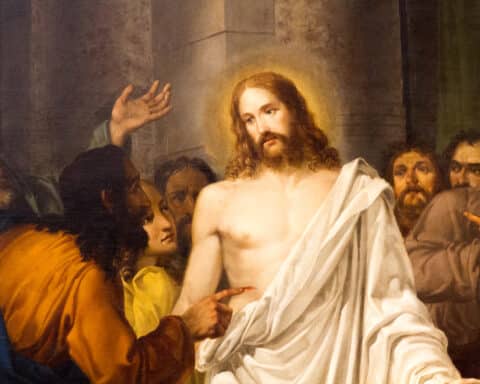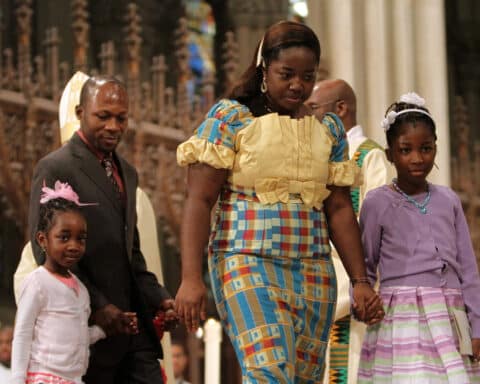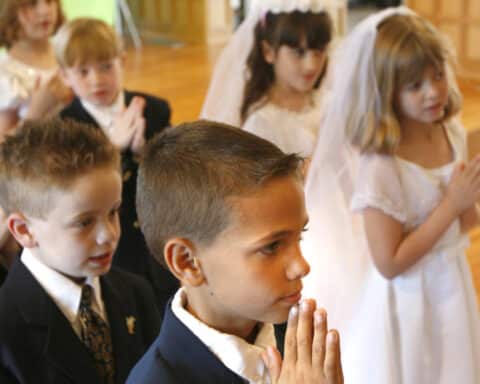Immediately after Easter, the Church presents us with the various resurrection narratives, the evidence from the Gospels that Christ did indeed rise from the dead, that his resurrection was not merely “spiritual” but physical, that those who knew him best during the years of his ministry saw him once again, spoke with him, touched his glorified body, sat with him on the seashore while he ate fish, and “knew him in the breaking of the bread.”
On the Third Sunday of Easter, we hear those last words in the account of the disciples on the road to Emmaus, as their hearts burned within them while a man whom they did not recognize opened the Scriptures — the Old Testament — to them, revealing the presence of Christ throughout all of salvation history. The Incarnate Word prepared them through the words of Scripture for the moment when they sat down together in Emmaus, and “he took bread, said the blessing, broke it, and gave it to them,” and “their eyes were opened.”
Two days before we hear this account, on the Friday of the Second Week of Easter, the Church begins to present to us at Mass the words of the sixth chapter of the Gospel of John. And on the Monday after the disciples’ eyes were opened and they “knew him in the breaking of the bread,” we are plunged into the “Bread of Life” discourse in John 6, as Jesus tells the crowd who had pursued him across the Sea of Galilee — perhaps the largest crowd to whom he preached during his public ministry — that they were there not because they recognized who he was but because he had satisfied their physical hunger in the multiplication of the loaves and fishes, when he fed the 5,000: “Amen, amen, I say to you, you are looking for me not because you saw signs but because you ate the loaves and were filled.”
But that food, despite its miraculous origin, has left them hungry again. And in their hunger, they — and we — have been prepared for the Good News that Christ is about to reveal to them: “Do not work for food that perishes but for the food that endures for eternal life, which the Son of Man will give you.”
Even if we don’t attend daily Mass, we know how the narrative unfolds: Christ reveals that he is the living bread come down from heaven, that the Bread of Life is his flesh, that his blood is true drink, and that “unless you eat the flesh of the Son of Man and drink his blood, you do not have life within you.” By the Saturday of the Third Week of Easter, the crowds who had pursued him across the sea had abandoned him, because even though they had been prepared, through their hunger for the loaves and fishes, to hear his words, they could not accept them. Only Peter and the rest of the Twelve remain, even though John gives no indication that they understand Jesus’ words any better than those who left. What they have, though, is faith, which Peter, speaking on behalf of the Twelve, professes: “We have come to believe and are convinced that you are the Holy One of God.”
Chronologically, of course, the events in John 6 take place before the Resurrection and the experience of the disciples on the road to Emmaus. But what the Church has done by arranging the readings just so — placing the account of their experience before the Bread of Life discourse in the liturgies of the Easter season — is to recreate for us how the apostles themselves came to understand what Jesus had said to them there in Capernaum before he asked them if they, too, wished to leave.
When the disciples at Emmaus “knew him in the breaking of the bread,” what happened? Jesus immediately “vanished from their sight.” Yet they did not react in despair because he was now gone; instead, in the dark of night, “they set out at once and returned to Jerusalem,” a trip of some seven miles, filled with joy that they could not wait to share with “the eleven and those with them.”
The source of that joy was the recognition that they now understood what Christ had said to them all there in Capernaum, when the crowd of 5,000 fell away, and only those who believed, though they did not yet understand, stayed. Through the sequence of the readings for the Third Week of Easter, the Church invites us to share in their joy, to relive their experience of coming to understand the gift that Christ gave them, and gives us still today, in the Eucharist.
Scott P. Richert is publisher for OSV.

